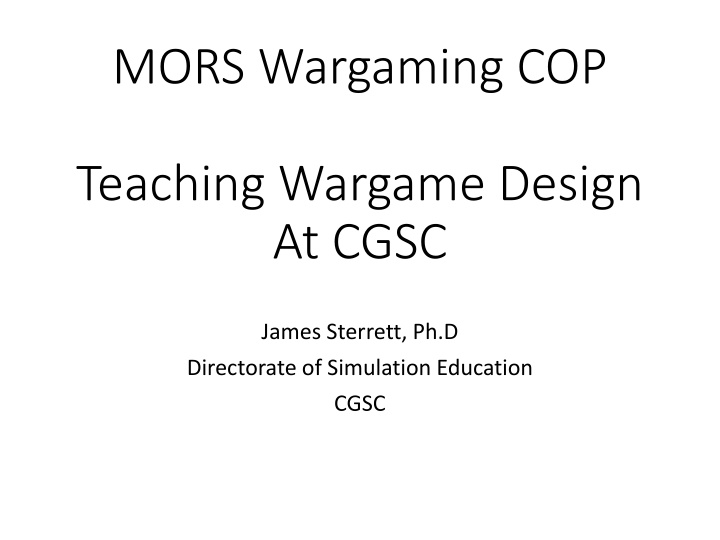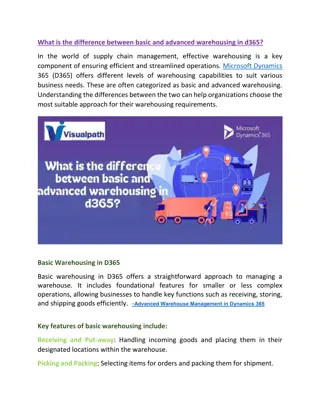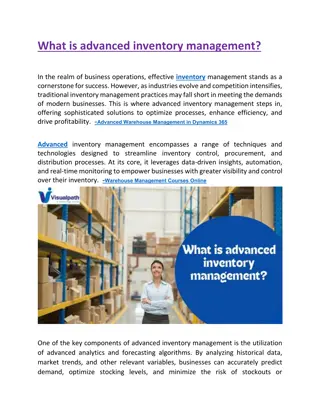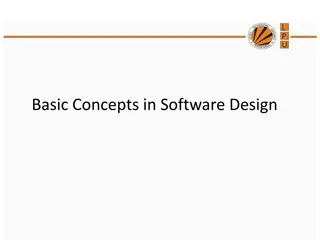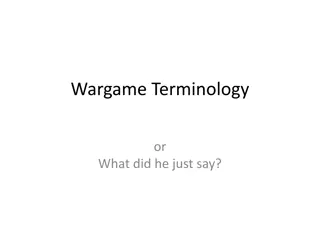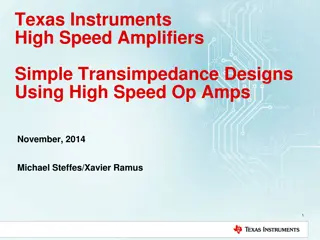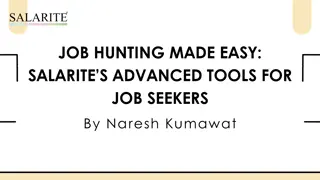Advanced Wargame Design at CGSC
This program at CGSC focuses on teaching wargame design to students from various military backgrounds, preparing them to become proficient game designers and consumers to enhance the quality of wargaming. Students engage in hands-on learning, testing their games and exploring various military topics within a structured curriculum. The goal is to cultivate critical thinking and strategic decision-making skills essential for effective military simulations and operations.
Download Presentation

Please find below an Image/Link to download the presentation.
The content on the website is provided AS IS for your information and personal use only. It may not be sold, licensed, or shared on other websites without obtaining consent from the author.If you encounter any issues during the download, it is possible that the publisher has removed the file from their server.
You are allowed to download the files provided on this website for personal or commercial use, subject to the condition that they are used lawfully. All files are the property of their respective owners.
The content on the website is provided AS IS for your information and personal use only. It may not be sold, licensed, or shared on other websites without obtaining consent from the author.
E N D
Presentation Transcript
MORS Wargaming COP Teaching Wargame Design At CGSC James Sterrett, Ph.D Directorate of Simulation Education CGSC
Who are our students? O4s attending Intermediate Level Education (MEL-4) Around a decade of time in service Mostly US Army, but a significant minority of sister service and international students Tiny minority of other agency students Many of the US Army students are in the FA57 (Functional Area 57), Simulation Operation field, who are required to take .
A small constellation of courses A380: Training with Games A381: Exercise Design A382: Introduction to Wargame Design A388: Exercise Support and the Brown Bag Gaming program
Purpose of A382 Introduce the art and science of wargame design Not only to make students wargame designers But also to make them more knowledgeable & discerning consumers And through both of these, over time, To improve the quality of wargaming (in all of its forms) conducted by the Army.
What is a Wargame? For the purposes of this class: A game is a simulation in which players make decisions to achieve goals. A wargame is a game on a military topic. this is a big-tent approach.
Constraints Time: 12 classes, each 2 hours long Spread out roughly every other day over 4-6 weeks Students may have no relevant background knowledge 16 students per class (may be fewer but must plan for 16)
Keys to our approach Each student builds a game: direct hand-on experience Each student tests games: their own and others Let them choose their own topics Scaffolding in the initial stages of the class
Initial Concept Research Understand Problems Systems Design Test Out of time! Release A poem is never finished; it is only abandoned. (W.H. Auden)
Schedule of classes 1 Introduction to wargames and the design process 2 ModellingTime 3 ModellingSpace 4 ModellingAssets 5 Modelling Resolution (&a tiny dose of basic probability) 6-11 Testing & Iteration 12 Final presentations Reflections
What Went Right Student engagement & creativity Student learning (both observed & self-reported) Battle for Moscow as demo experience TSAR model structure Student testing
Problems Found and Fixed Shut up, James! (Balance lecture vs discussion) Must have examples to hand for all demonstrations Full-class testing better than half-class testing Random selection of speaker -- dropped
Dilemmas Balancing: Designing/Testing myself as an example but not all students can see it happen vs Observing and providing feedback on student designs Balancing depth vs breadth for observation & feedback: Do I play one game and understand it in detail, Or observe all of them but give less useful feedback?
Things Learned Unleash creativity But provide structure as scaffolding Testing time is key Brown Bag is critical
Things to Improve or Change Flip the classroom: Put the TSAR lectures on YouTube Saves time for students to discuss own approaches 16 students * ~5 minutes = an entire 2 hour class Need the XT feedback though No Matrix Games (because avoids creating a model) Need more scaffolding for creating a combat model Create rubric for guidance
Wider Thoughts When should officers be taught game design? Earlier! No later than staff college Bill payers to teach it Joint math/history class as cadets? Later on it s going to be an elective Reinvigorate wargaming clubs as gateway Next year at CGSC: MMAS Wargame Focus Program
